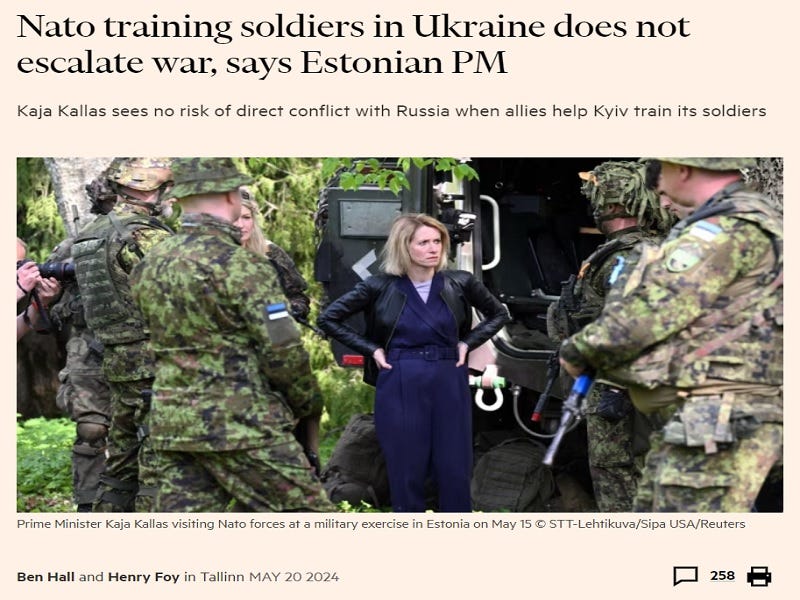Kaja Kallas’ assurances that Article 5 wouldn’t automatically be invoked if Russia killed uniformed NATO trainers in Ukraine shouldn’t be taken at face value since tensions could easily spiral out of control in that scenario.
Estonian Prime Minister Kaja Kallas told the Financial Times that Article 5 wouldn’t automatically be invoked if NATO troops are killed in Ukraine. In her words, “I can’t possibly imagine that if somebody is hurt there, then those who have sent their people will say ‘it’s article five. Let’s…bomb Russia.’ It is not how it works. It’s not automatic. So these fears are not well-founded. If you send your people to help Ukrainians…you know the country is in war and you go to a risk zone. So you take the risk.”
She also admitted that “there are countries who are training soldiers on the ground already” so her words aren’t merely theoretical. This disclosure follows Polish Prime Minister Donald Tusk admitting earlier in the month that “there are some troops there, I mean soldiers. There are some soldiers there. Observers, engineers. They’re helping them out.” Even though many believe that the US is also involved in these missions, Chairman of the Joint Chiefs of Staff Gen. Charles Q. Brown Jr. denies it.
He told the New York Times that “We’ll get there eventually, over time”, with respect to authorizing the deployment of American boots on the ground for alleged training purposes despite his concern that this would “put a bunch of NATO trainers at risk” and require air defenses to protect them. On that topic, although it was earlier assessed that “It Would Be Surprising If Polish Patriot Systems Were Used To Protect Western Ukraine” due to Anglo-American objections at the time, calculations might be changing.
Tusk and Kallas’ revelations confirm the open secret that NATO members have secretly deployed troops to Ukraine under the pretext of training their counterparts, and with Zelensky freaking out after Russia’s fresh push into Kharkov Region, he’s once again demanding that NATO shoot down Russian missiles. Seeing as how Brown said that an umbrella would be required to protect NATO trainers there, which the aforementioned two leaders already said are on the ground, one scenario is beginning to take shape.
France, Poland, and those other countries like the Baltic States that might participate in a “coalition of the willing” for conventionally intervening in Ukraine could potentially formalize make their hitherto unofficial military presence there after regrouping their forces in Western Ukraine near the NATO border. Upon doing so, their Ukrainian counterparts – including law enforcement officers – could then be freed up to go to the front, with these NATO troops being protected by Patriot systems in Poland and Romania.
This scenario falls short of the dramatic one of a large-scale NATO force rushing to the Dnieper or possibly even beyond, the latter of which could prompt Russia to use tactical nuclear weapons in self-defense in order to prevent its new formerly Ukrainian regions from being invaded by the bloc. If Kallas was telling the truth about NATO not being interested in activating Article 5 if Russian missiles break through the Patriot umbrella to kill its then-official trainers there, then World War III would be unlikely.
Nevertheless, it’s unlikely that the US would hang its allies out to dry if Russia pulverized their forces in Ukraine, thus accelerating the seemingly inevitable scenario that Brown hinted at earlier this month regarding conventional American military involvement in Ukraine despite the risks of war with Russia. For these reasons, Kallas’ assurances on this sensitive subject shouldn’t be taken at face value since tensions could easily spiral out of control if uniformed NATO troops were killed by Russia in Ukraine.




